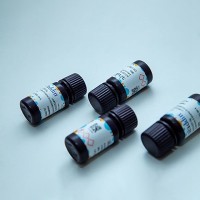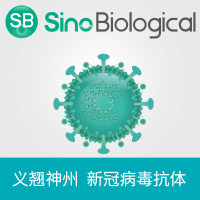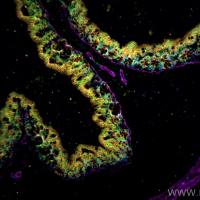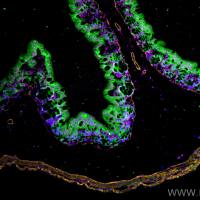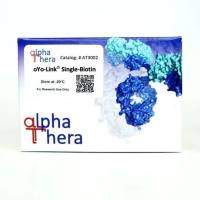Antibody Labeling
互联网
Antibody Labeling
Immunolabeling of thin sections for EM
Thin sections of biological material, mounted on specimen grids, can be easily labeled by floating them, section-side down, on small drops of antibody. This method will work for sections through resin-embedded material as well as for thin, thawed, cryosections.
Procedure
If a long piece of parafilm is stuck to a bench bench surface with a drop of water the antibody incubations and washing steps can be performed on the clean surface of the parafilm. Only expose as much of the parafilm as it is needed and do not contaminate the clean parafilm surface.
Antibody labeling protocols are available on the antibody labeling page. A simple labeling procedure is summarized below.
- Blocking step 5 min
- Antibody 15 min
- PBS Wash 6 x 2 min
- Protein A Gold 15 min
- PBS Wash 6 x 2 min
- Water Wash 5 x 1 min.
Blocking
Any "sticky" protein can be used to cover non-specific binding sites on the thawed sections. Be aware that the chosen protein must not react with any of the affinity reagents to be used (e.g. rabbit serum cannot be used with protein A gold; bovine serum (FCS) cannot be used as a blocking agent if anti-BSA labelling is being studied).
We routinely use 10% FCS in PBS as a blocking agent, but BSA, gelatin, ovalbumin and cold water fish skin gelatin have been used. The blocking agents used on Western blots should also work on these sectons.
To "quench" free aldehyde groups that may be present in the section 0.15% glycine can be added to the blocking solution.
|
|
|
Antibody labeling:
Specimen grids are floated with the side containing the sections on the liquid. Drops of PBS, or diluted antibodies, are placed on the clean surface of parafilm. The grids are transferred from drop to drop on the parafilm. Make sure the sections do not dry out. The parafilm is kept covered until ready to use. |
Antibody Incubation
The antibody, diluted to a suitable concentration, in PBS containing blocking agent, is centrifuged for 1 min in an Eppendorf tube before use. This will remove any aggregates formed during storage.
Place small droplets of antibody (3 to 5 microliter) on the parafilm surface and float the grids, with sections down, on them. The grids are transferred from the blocking solution using fine forceps. To ensure that the antibody droplets do not dry out (and concentrate) place a wet piece of filter paper near them and cover it and them with a plastic dish.
PBS Wash
After antibody incubation the grids are removed from the antibody, with forceps, and placed onto large drops of PBS on the parafilm surface. Transfer the grids from drop to drop either with forceps or a large wire loop. Take care not to wet the top, dry surface of the grid.
Protein A-gold Incubation
Like the antibody, the protein A-gold is diluted in PBS with blocking agent but it is not centrifuged prior to use. Small droplets of diluted protein A-gold (same volumes as used for the antibodies) are placed on the parafilm surface, the grids are placed on the drops and they are left covered during the incubation.
Go here if you want to see a method of making colloidal gold probes and coupling them to proteins such as protein A.
PBS Wash
This is the same as when washing after antibody incubation. Again take care not to wet the back of the grid.
Water Wash
Although only a short wash, THIS STEP IS VERY IMPORTANT. DO NOT FORGET IT! This step removes all phosphate molecules prior to incubation with uranyl acetate. Phosphates present in the sections will precipitate the uranyl salts.
Once the antibody reactions have taken place the only thing left to do is the final contrasting and drying step which will enable us to examine the sections in the electron microscope.


